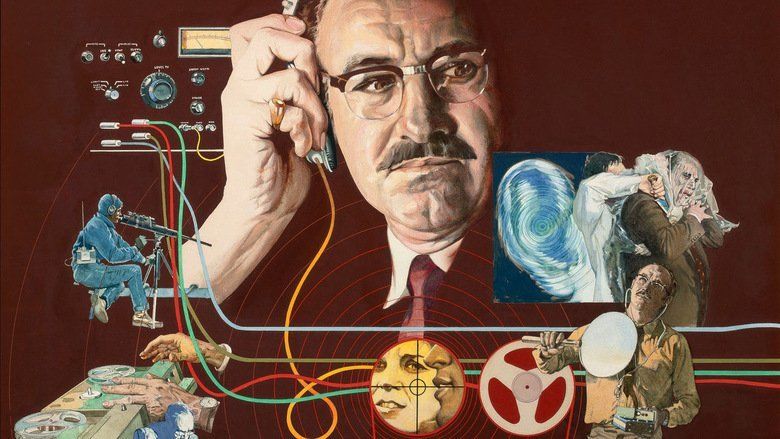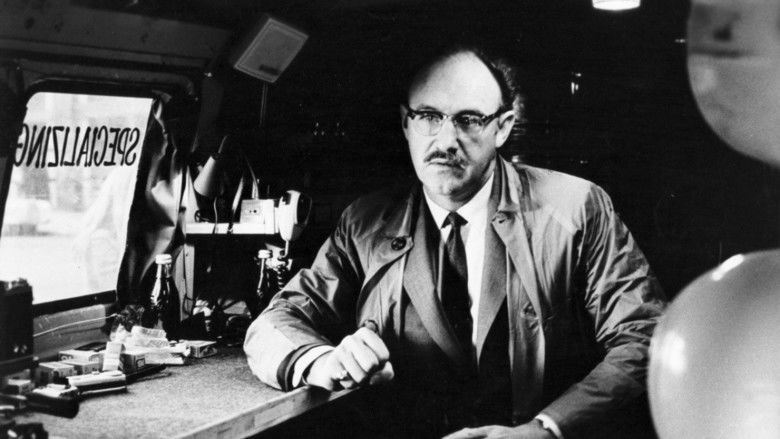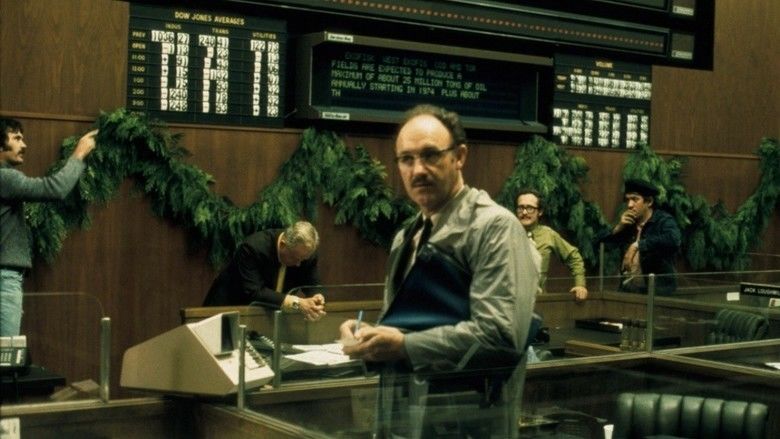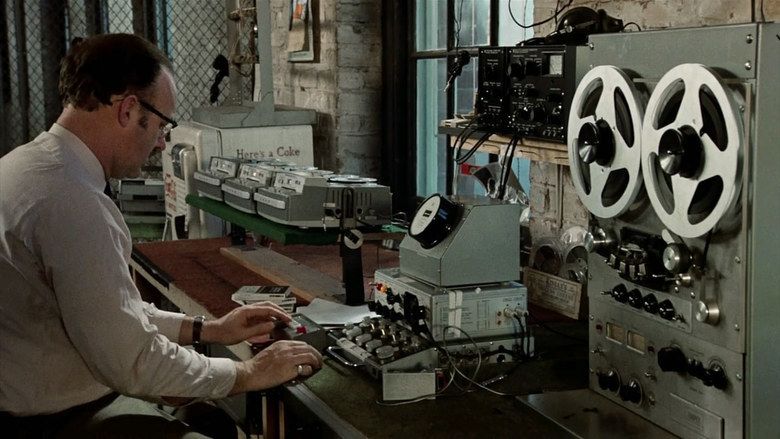The Conversation
9 /10 1 Votes9
4/4 Roger Ebert 86% Metacritic Genre Drama, Mystery, Thriller Duration Country United States | 7.9/10 IMDb 98% Rotten Tomatoes Writer Francis Ford Coppola Language English | |||||||||||||||||||||||||||||||||
 | ||||||||||||||||||||||||||||||||||
Release date April 7, 1974 (1974-04-07) (New York City) Awards BAFTA Award for Best Sound Cast (Harry Caul), (Stan), (Mark), (Ann), (Martin Stett), (Amy Fredericks) Similar movies Ant-Man , Terminator Salvation , K-911 , K-9: P.I. , The Age of Adaline , K-9 Tagline Harry Caul is an invader of privacy. The best in the business. | ||||||||||||||||||||||||||||||||||
The conversation hank williams jr
The Conversation is a 1974 American mystery thriller film written, produced and directed by Francis Ford Coppola and starring Gene Hackman with supporting roles by John Cazale, Allen Garfield, Cindy Williams, Frederic Forrest, Harrison Ford, Teri Garr and Robert Duvall.
Contents
- The conversation hank williams jr
- Texas the conversation
- Plot
- Production
- Inspiration
- Box office
- Critical response
- Accolades
- Influence
- References

The plot revolves around a surveillance expert and the moral dilemma he faces when his recordings reveal a potential murder. Coppola cited the 1966 film Blowup as a key influence. However, since the film was released to theaters just a few months before Richard Nixon resigned as President, he felt that audiences interpreted the film to be a reaction to the Watergate scandal.

The Conversation won the Grand Prix du Festival International du Film, the highest honor at the 1974 Cannes Film Festival. It was nominated for three Academy Awards in 1974 and lost Best Picture to The Godfather Part II, another Francis Ford Coppola film. In 1995, it was selected for preservation in the National Film Registry by the Library of Congress as being "culturally, historically, or aesthetically significant".

Originally, Paramount Pictures distributed the film worldwide. Paramount retains American rights to this day but international rights are now held by Miramax Films and StudioCanal in conjunction with American Zoetrope.

Texas the conversation
Plot

Harry Caul is a surveillance expert who runs his own company in San Francisco. He is highly respected by others in the profession. Caul is obsessed with his own privacy; his apartment is almost bare behind its triple-locked door and burglar alarm, he uses pay phones to make calls, claims to have no home telephone and his office is enclosed in wire mesh in a corner of a much larger warehouse. Caul is utterly professional at work but finds personal contact extremely difficult because he is intensely secretive about even the most trivial aspects of his life. Dense crowds make him feel uncomfortable and he is withdrawn and taciturn in more intimate social situations. He is also reticent and obsessively secretive with colleagues. His appearance is nondescript, except for his habit of wearing a translucent grey plastic raincoat almost everywhere he goes, even when it is not raining.

Despite Caul's insistence that his professional code means that he is not responsible for the actual content of the conversations he records or the use to which his clients put his surveillance activities, he is racked by guilt over a past wiretap job which resulted in the murder of three people. This sense of guilt is amplified by his devout Catholicism. His one hobby is playing along to jazz records on a tenor saxophone in the privacy of his apartment.
Caul, his colleague Stan and some freelance associates have taken on the task of bugging the conversation of a couple as they walk through crowded Union Square in San Francisco, surrounded by a cacophony of background noise. Amid the small-talk, the couple discuss fears that they are being watched, and mention a discreet meeting at a hotel room in a few days. The challenging task of recording this conversation is accomplished by multiple surveillance operatives located in different positions around the square. After Caul has merged and filtered the different tapes, the final result is a sound recording in which the words themselves become crystal clear, but their actual meaning remains ambiguous.
Although Caul cannot understand the true meaning of the conversation, he finds the cryptic nuances and emotional undercurrents contained within it deeply troubling. Sensing danger, Caul feels increasingly uneasy about what may happen to the couple once the client hears the tape. He plays the tape again and again throughout the movie, gradually refining its accuracy. He concentrates on one key phrase hidden under the sound of a street musician: "He'd kill us if he got the chance". Caul constantly reinterprets the speakers' subtle emphasis on particular words in this phrase, trying to figure out their meaning in the light of what he suspects and subsequently discovers.
Caul avoids handing in the tape to the aide of the man who commissioned the surveillance. Afterward, he finds himself under increasing pressure from the client's aide and is himself followed, tricked, and bugged. The tape of the conversation is eventually stolen from him in a moment when his guard is down.
Caul is tormented by guilt over what he fears will happen to the couple, and his desperate efforts to forestall tragedy fail. To his surprise, it turns out that the conversation he had obsessed over might not mean what he thought it did: the tragedy he had expected is not the one that eventually occurs. He is led to believe that his apartment has been bugged and goes on a frantic search for the listening device, tearing up walls and floorboards and destroying his apartment to no avail. He sits amid the wreckage, playing the only thing in his apartment left intact: his saxophone.
Production
Coppola has cited Michelangelo Antonioni's Blowup (1966) as a key influence on his conceptualization of the film's themes, such as surveillance versus participation, and perception versus reality. "Francis had seen [it] a year or two before, and had the idea to fuse the concept of Blowup with the world of audio surveillance."
On the DVD commentary, Coppola says he was shocked to learn that the film utilized the very same surveillance and wire-tapping equipment that members of the Nixon Administration used to spy on political opponents prior to the Watergate scandal. Coppola has said this is the reason the film gained part of the recognition it has received, but that this is entirely coincidental. Not only was the script for The Conversation completed in the mid-1960s (before the Nixon Administration came to power) but the spying equipment used in the film was discovered through research and the use of technical advisers and not, as many believed, by revelatory newspaper stories about the Watergate break-in. Coppola also noted that filming of The Conversation had been completed several months before the most revelatory Watergate stories broke in the press. Since the film was released to theaters just a few months before Richard Nixon resigned as President, Coppola felt that audiences interpreted the film to be a reaction to both the Watergate scandal and its fall-out.
The original cinematographer of The Conversation was Haskell Wexler. Severe creative and personal differences with Coppola led to Wexler's firing shortly after production began and Coppola replaced him with Bill Butler. Wexler's footage on The Conversation was completely reshot, except for the technically complex surveillance scene in Union Square. This would be the first of two Oscar-nominated films where Wexler would be fired and replaced by Butler, the second being One Flew Over the Cuckoo's Nest (1975), where Wexler had similar problems with Miloš Forman.
Walter Murch served as the supervising editor and sound designer. Murch had more or less a free hand during the editing process, since Coppola was already working on The Godfather Part II at the time. Coppola noted in the DVD commentary that Hackman had a very difficult time adapting to the Harry Caul character because it was so much unlike himself. Coppola says that Hackman was at the time an outgoing and approachable person who preferred casual clothes, whereas Caul was meant to be a socially awkward loner who wore a rain coat and out-of-style glasses. Coppola said that Hackman's efforts to tap into the character made the actor moody and irritable on-set but otherwise Coppola got along well with his leading man. Coppola also notes on the commentary that Hackman considers this one of his favorite performances.
The Conversation features a piano score composed and performed by David Shire. The score was created before the film was shot. On some cues, Shire used musique concrete techniques, taking the taped sounds of the piano and distorting them in different ways to create alternative tonalities to round out the score. The score was released on CD by Intrada Records in 2001.
Inspiration
The character of Harry Caul was inspired by surveillance technology expert Martin Kaiser, who also served as a technical consultant on the film.
According to Kaiser, the final scene of the film - in which Caul is convinced he is being eavesdropped in his apartment, cannot find the listening device, and consoles himself by playing his saxophone - was inspired by the passive covert listening devices created by Léon Theremin, such as the Great Seal bug. "He couldn't find out where [the bug] was because it was the instrument itself."
Box office
The film made $4,420,000 in its domestic gross on a $1,600,000 budget.
Critical response
The film currently holds 98% on Rotten Tomatoes with an average of 8.7/10 based on 48 reviews of which 47 were positive and 1 negative with the consensus: "This tense, paranoid thriller presents Francis Ford Coppola at his finest—and makes some remarkably advanced arguments about technology's role in society that still resonate today."
Roger Ebert's contemporary review gave The Conversation four out of four stars, and described Hackman's portrayal of Caul as "one of the most affecting and tragic characters in the movies." In 2001, Ebert added The Conversation to his "Great Movies" list, describing Hackman's performance as a "career peak" and writing that the film "comes from another time and place than today's thrillers, which are so often simple-minded."
In 1995, The Conversation was selected for preservation in the United States National Film Registry by the Library of Congress as being "culturally, historically, or aesthetically significant". Gene Hackman has said it's his favorite of all the films he's made. In 2012, the Motion Picture Editors Guild listed the film as the eleventh best-edited film of all time based on a survey of its membership.
Accolades
The Conversation won the Grand Prix du Festival International du Film, the highest honor at the 1974 Cannes Film Festival. The film was also nominated for three Academy Awards for 1974, but the Academy preferred Coppola's The Godfather Part II, unlike critics in the National Board of Review and the National Society of Film Critics.
Influence
According to film critic Kim Newman, the 1998 film Enemy of the State, which also stars Gene Hackman as co-protagonist, could be construed as a "continuation of The Conversation." Hackman's character in Enemy of the State closely resembles Caul: he dons the same translucent raincoat and his workshop is nearly identical to Caul's. Enemy of the State also includes a scene which is highly similar to The Conversation's opening surveillance scene in San Francisco's Union Square.
References
The Conversation WikipediaThe Conversation IMDbThe Conversation Roger EbertThe Conversation Rotten TomatoesThe Conversation MetacriticThe Conversation themoviedb.org
